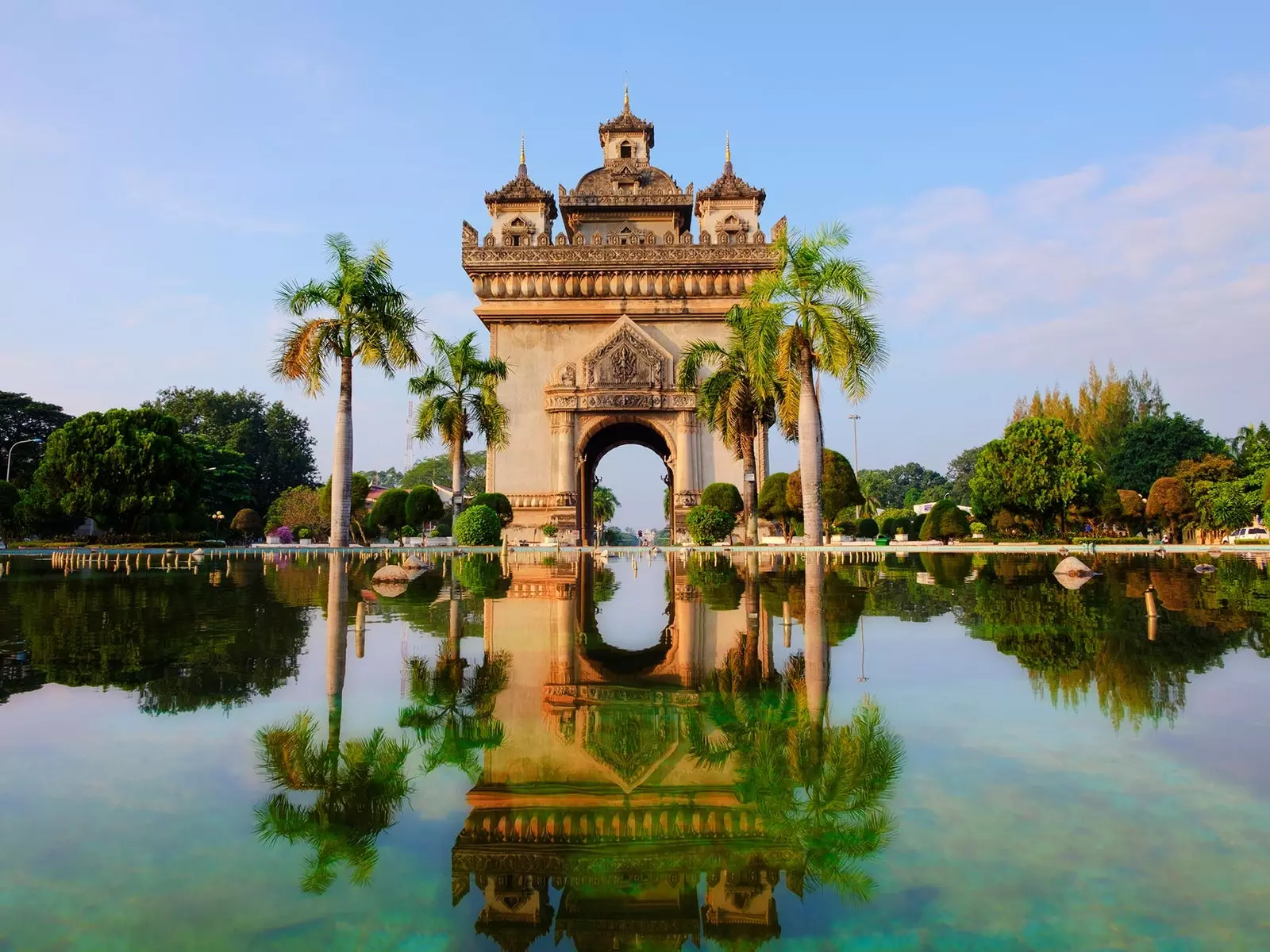
Patuxai: Vientiane's Triumphal Arch
Vientiane is a shy capital , doesn't talk much, doesn't like to be the center of attention in conversations, but when you meet her she is fascinating and full of surprises . In part this is because it grew up in the shadow of other major Asian metropolises.
There is a popular saying that perfectly condenses the Laotian essence: “In Thailand they grow rice, Vietnam they sell the rice and in Laos they watch how the rice grows ”.
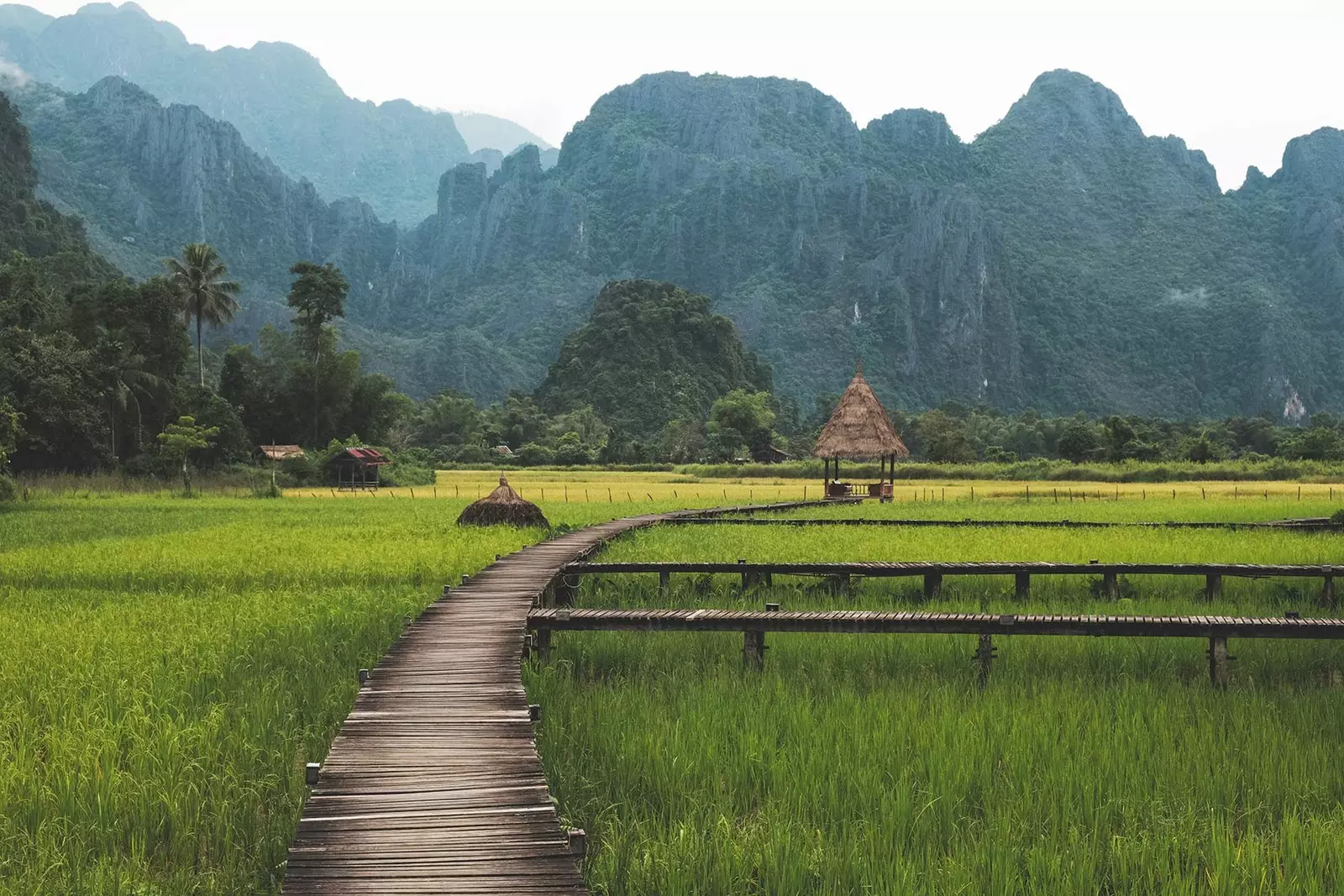
Rice fields in Vang Vieng, in Vientiane province
That same atmosphere that the proverb evokes - calm, unhurried, that catches you without realizing it - is one of the wonders of this Asian country, and also of the city.
But make no mistake, there is plenty to see and do in Vientiane: centennial temples, giant Buddhas, parks, Frenchified neighborhoods and night markets brimming with life.
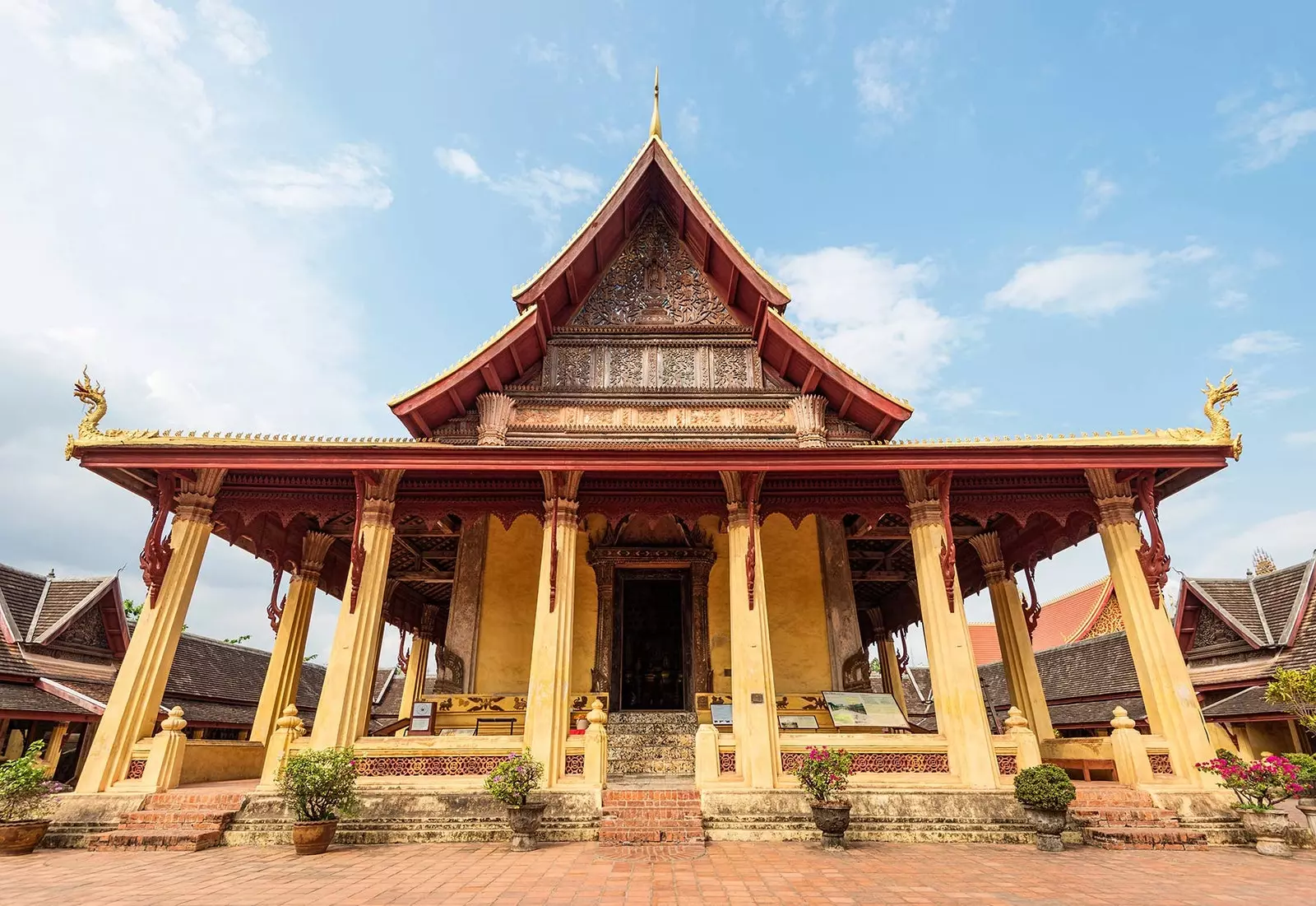
Wat Sisaket Temple
Wat Shisaket
We start with the Wat Sisaket temple, a place that will leave you speechless and that will make you the capital of Laos stay definitely lodged in a corner of your heart. The outer part is a rectangular structure in the form of a gallery.
The surprising thing is that on its walls there are thousands of buddhas of different ages and sizes made of copper, silver and ceramics . In total there are more than two thousand. If you pick up your pace and stare at the Buddhas, it creates a psychedelic effect, like a kaleidoscope.
In the center stands the main temple. Its walls are richly decorated with frescoes depicting costumbrista scenes and an altar with buddha sculptures, offerings and sacred bowls . The exterior part presents a group of columns that support the typical roofs of Laotian pagodas, in the form of an inverted "v" and with several superimposed layers.
In Laos it is very common to find some group of buddhist monks . Although they dress in a simple maroon robe and have their hair cut short, they always exude an air of aristocratic elegance.
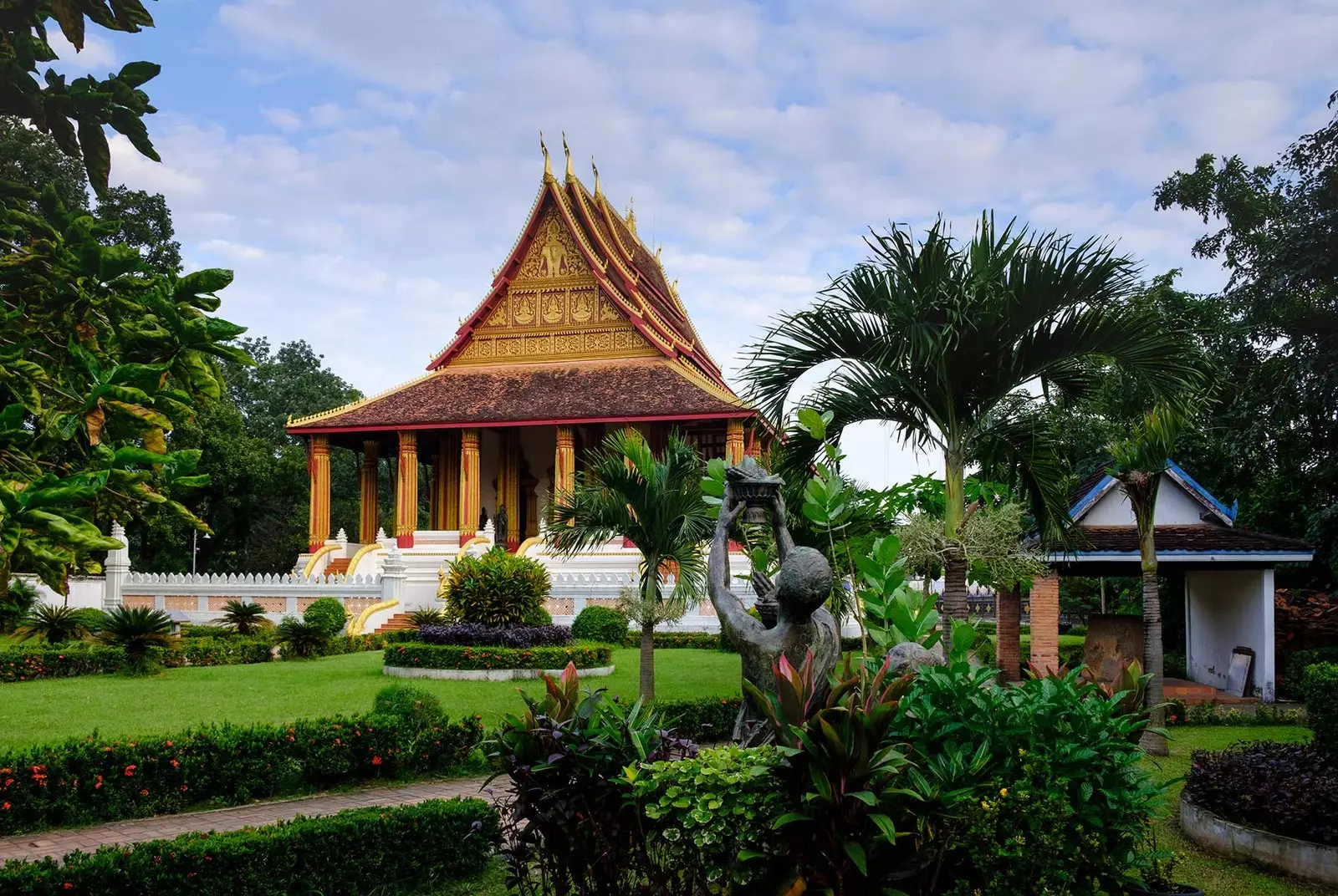
Haw Pha Kaeo Temple
It is very interesting and recommended. approach them to chat for a while . They will surely answer yes with a wide smile. They like to talk to tourists as it is an easy way to practice English.
There are even temples where they have an area for language exchange . It will also be a unique opportunity to get closer to your reality and delve into the meaning of Buddhism.
Haw Pha Kaeo Temple
Nearby is Haw Pha Kaeo, a splendid temple built in 1565. As a curiosity, for several years it housed the famous jade emerald buddha , which is currently on display at the **Grand Palace in Bangkok**.
The rooms are decorated with sculptures and floral motifs in a sort of eastern rococo . Inside there is a small museum with relics and art objects . Most of the temples and points of interest can be visited on foot, but I recommend rent a motorcycle.
It is a relatively small city, with about 200,000 inhabitants, the streets are well paved and no traffic jams nor large crowds of cars, as occurs in other Asian capitals. In addition, it is very cheap, only a few six or eight euros per day.
In Vientiane everything is very close. A five-minute walk brings us to **Lane Xang Avenue, inspired by the Champs Elysées**, a wide space, flanked by colonial buildings from the Indochinese period, among which the Presidential palace.
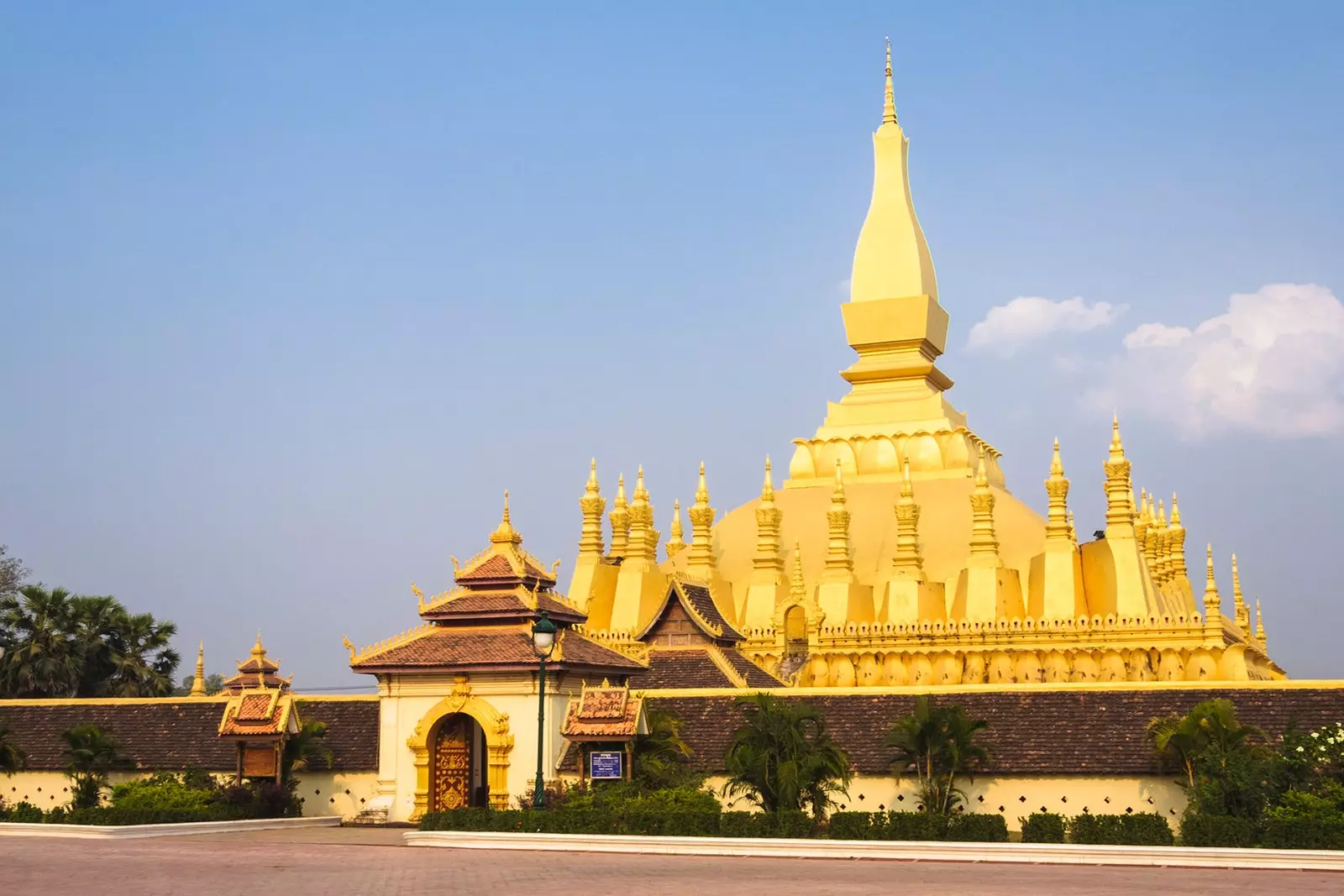
Pha That Luang Buddhist Stupa
If you remember the French Champs Elysées you should have its Triumphal Arch: it is called Patuxai, it measures 60 meters and means "Gate of Victory" , in memory of those who died in the war for Independence.
The Great Golden Stupa
After the French affair, and following the wide avenue, we arrive at Pha That Luang, the Great Golden Stupa, the great icon of the country , one of those places that you cannot miss.
It dates from 1566 and is 45 meters high and 69 meters wide. It is built on three levels, symbolizing the ascent from earth to heaven.
The first level is the earthly world, the second is the 30 perfections of Buddhism and the third and last level is the prelude to the kingdom of heaven: Nirvana itself.
From the distance its golden color shines, covering its entire surface. It would seem, as often happens, that it is simply painted gold, but in this case it is not so: 500 kilos of solid gold sheets cover the stupa.
buddha park
About 25 kilometers from the city is the Buddha Park, a very peculiar place created in the 90's by a Laotian artist.
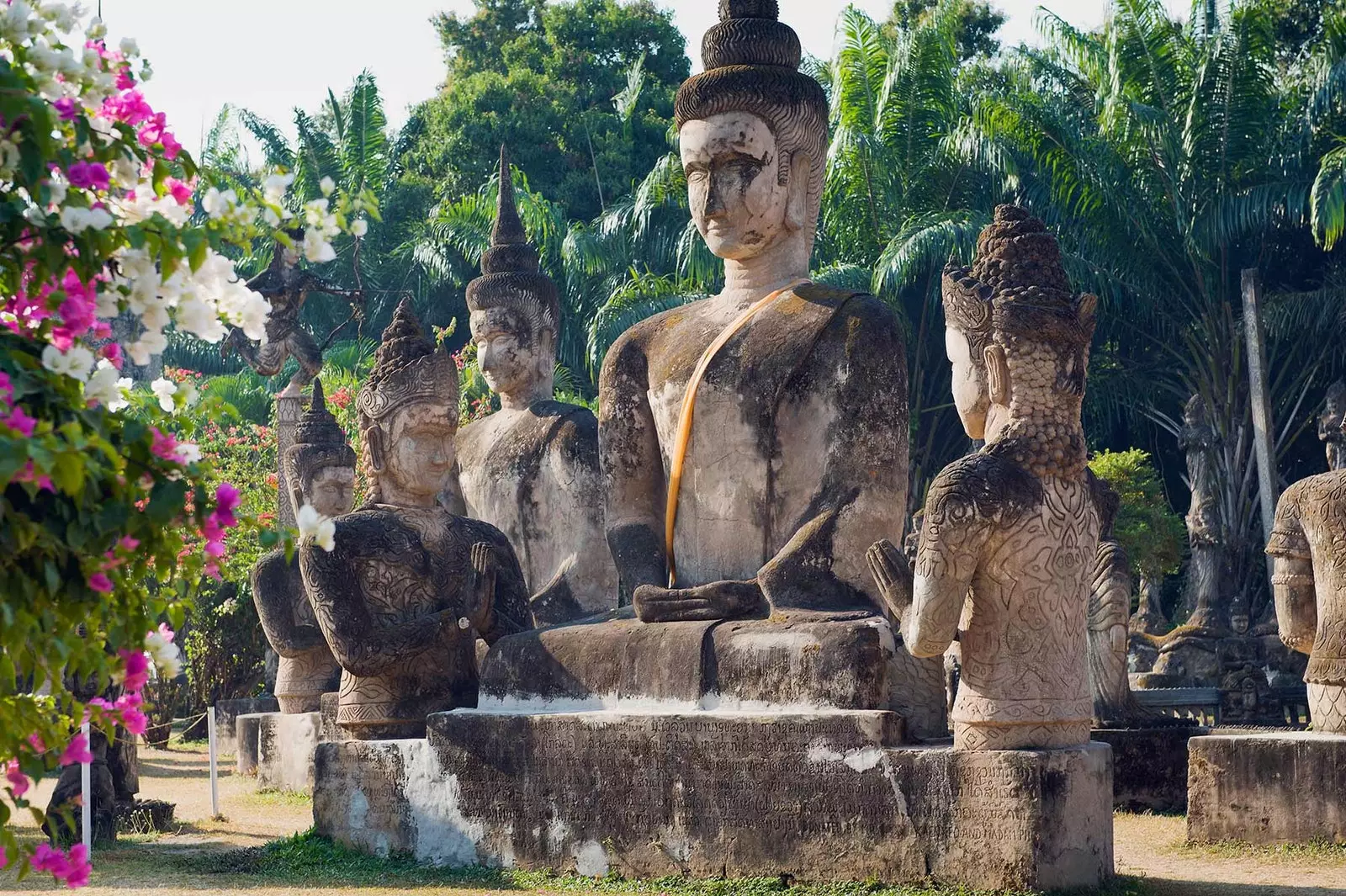
The imposing statues of Buddha Park
It is a huge theme park unique in its kind, with more than 200 very colorful and bizarre statues : from a giant twenty-foot pumpkin crowned by a tree that houses the underworld inside, to a huge 120 meter long reclining Buddha , as well as animals, fantastic beings, skulls and of course elephants.
Back in the city, in the late afternoon, it's time to have a cold beer. Around the nam phou fountain there is a great offer of restaurants and bars.
At night there is a very good atmosphere, with live concerts and a simple but grateful laser light show.
You must not miss the night market : It is a good place to buy some souvenirs, clothes, electronics and, above all, feel the atmosphere of the capital. It's a market made by and for the locals , one hundred percent authentic.
On that walk you can also watch the sunset on the banks of the Mekong River , the eighth largest in the world. Its waters come from the Himalayan mountain ranges, in ** China **, and cross ** Myanmar, Laos, Thailand and Cambodia ** to finally flow into Vietnam .
Despite being in the country's capital, you can still see green meadows and the sun fading over the horizon. It is a perfect time to let go and do what Laotians love so much: watch the rice grow.
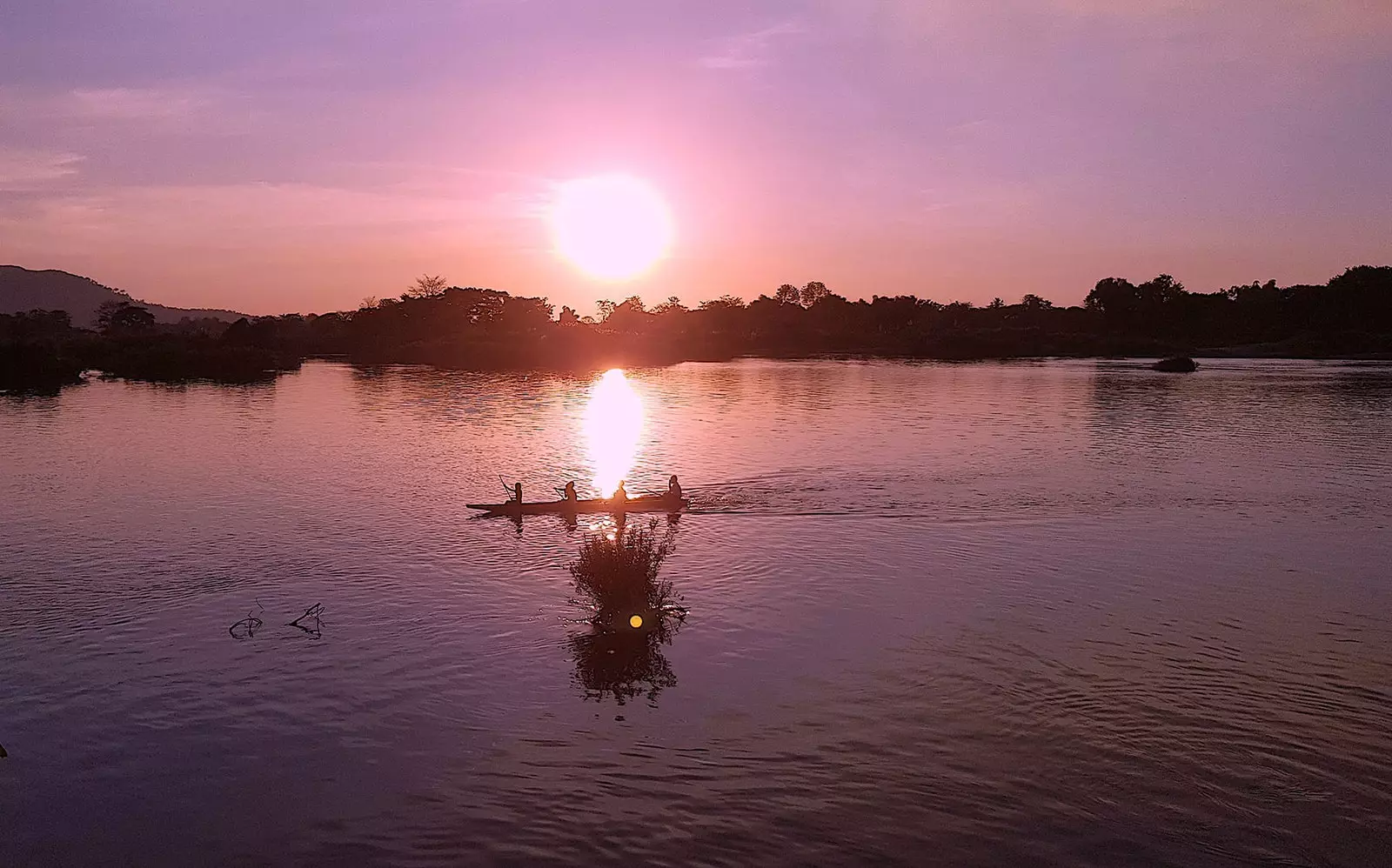
Pink sunset on the Mekong River
